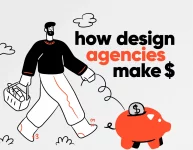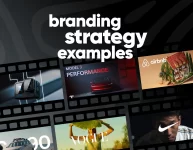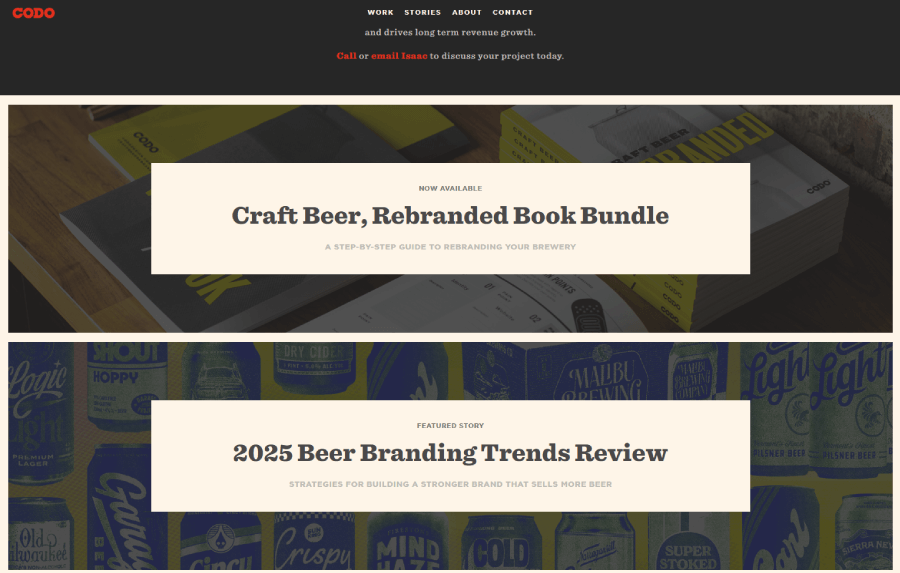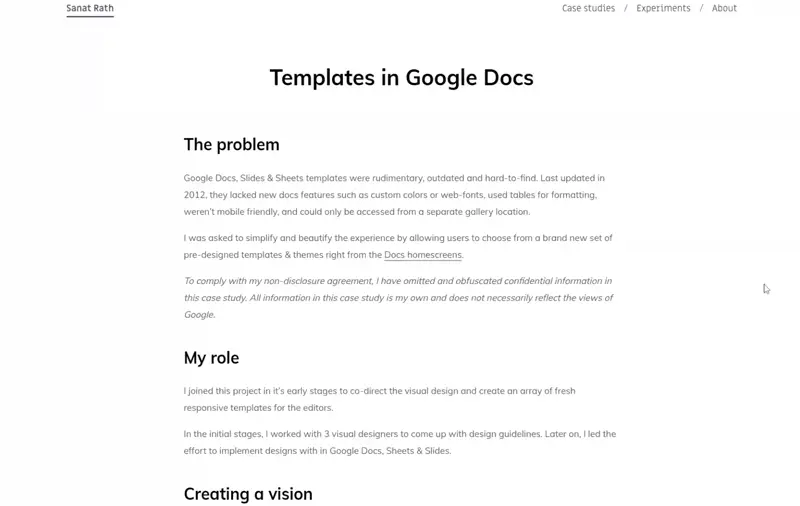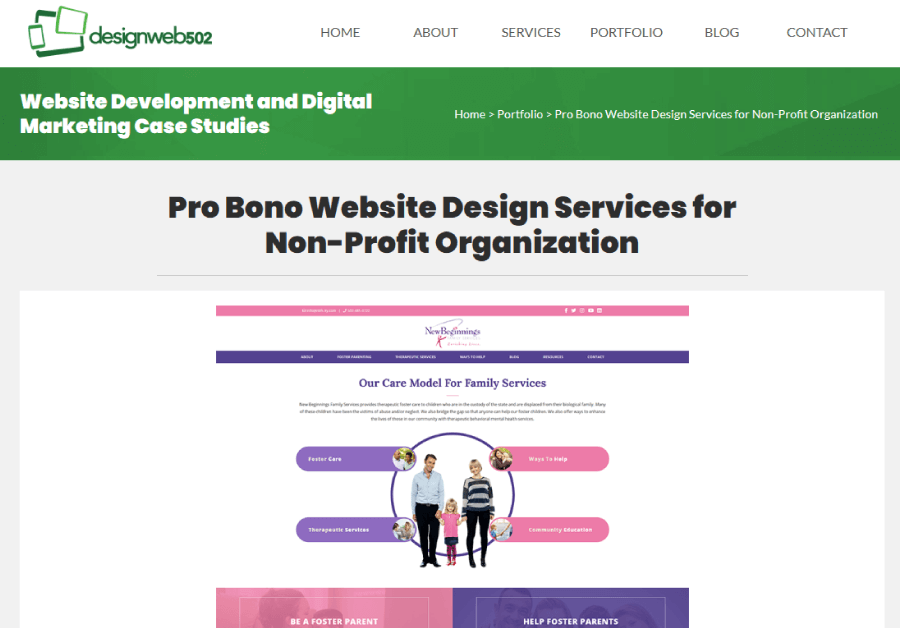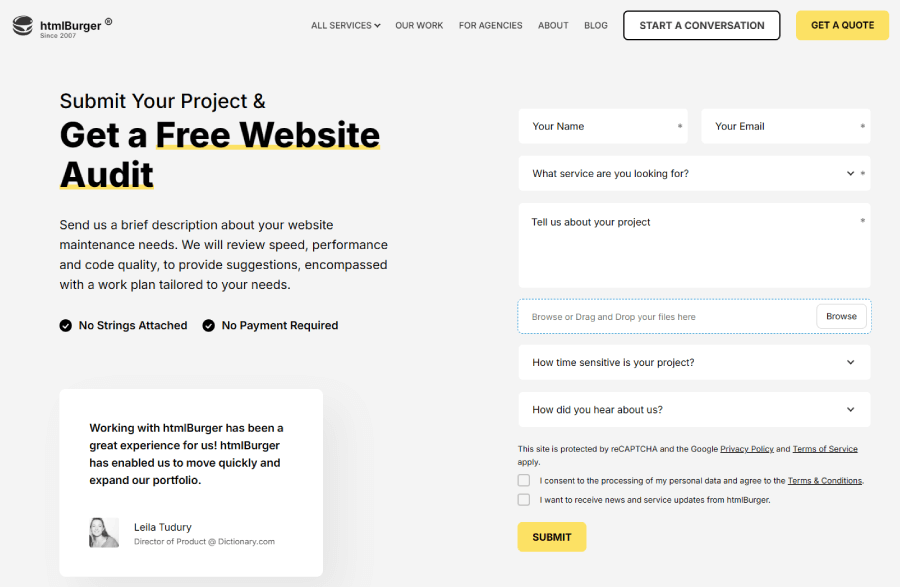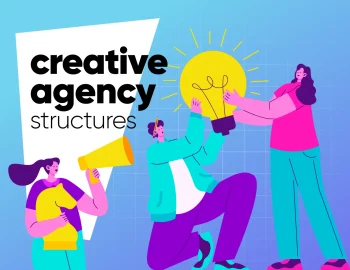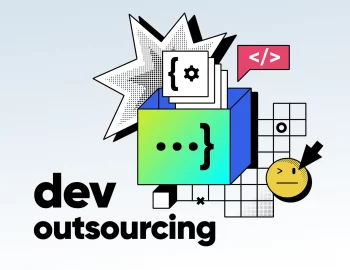This is the pocket guide on how design agencies find clients with easy, practical, and down-to-earth tips (plus real-life examples).
Trying to find new clients can be pretty exhausting. You do the work, but sometimes it feels like no one’s noticing. Ор worse, you end up chasing the wrong leads. If you run a design agency, you probably know this struggle all too well.
This is why I wrote this pocket guide, to share some simple ideas that actually help get your agency in front of the right people. The tips don’t preach pushy sales tricks or big budgets needed, it’s mostly honest ways to show what you do and start real conversations.
Now, let’s jump straight into a few easy moves that can make a difference, without making you feel like you’re shouting into the void.
1. Niche down so people know exactly what you do
Some agencies often try to say yes to everything, especially when they’re starting out. It does make sense, though, as keeping the lights on takes priority. But over time, a generalist portfolio can feel like a storage room full of random gear: a Shopify store here, a nonprofit site there, maybe a few random landing pages in between.
If you want to be remembered and become the “I know an agency that does this specific thing!” go-to, you need to get known for something.
🎯 Why niching works
When someone says, “We need a website for our real estate firm”, they’re not looking for a generalist agency. They’re hoping to find a team that has already worked with similar businesses and understands the quirks of that industry.
You can pick one type of client or one kind of site and build your name around that. You might focus on:
- Coaches and online course creators
- Indie eCommerce brands
- Local brick-and-mortar shops
- Tech startups
- Nonprofits and community orgs
That doesn’t mean you turn other projects away, of course, but it does mean your marketing, your case studies, and your conversations get a very specific focus.
2. Be where the people are
Networking doesn’t have to mean awkward pitches or stuffy industry panels. For design agencies, it often just means showing up where your clients and collaborators are already talking.
👨👩👦👦 Online spaces that actually work
- Slack groups or Discord communities. Join ones that align with your niche. If your agency designs sites for cafes or bakeries, small business channels and food industry groups are where your people hang out.
- Reddit. Subreddits like r/smallbusiness, r/web_design, or even niche ones like r/restaurateur are full of questions your agency could answer.
- X. Still solid for connecting with other agencies, creatives, and even prospective clients, especially if you share tips, behind-the-scenes updates, or quick advice in threads.
Just be helpful, post thoughtful stuff, answer questions, and the right people will notice.
👨👩👦👦 Local stuff still works
Look out for creative meetups, coworking pop-ins, or small business mixers in your area. These kinds of events often have real decision-makers just looking for someone they can trust.
If you’re up for it, offer to host a mini-session at a local coworking space, like “What to know before hiring a web design agency” or “Easy website fixes for local shops”. You don’t need to give a TED Talk, of course, but show you know a little more than your audience and be willing to share.
3. Let your projects speak for you
In short, you can tell people your agency’s good or you can show them.
Most clients don’t like buzzwords or brochures. They want proof, real websites, actual results, and a sense of how your team solves problems. That’s where your portfolio comes in.
🖼️ Share useful case studies
Skip the filler and share what people really want to see:
- Who was the client, and what do they do?
- What challenge were they facing before reaching out?
- How did your team approach the project, and what decisions shaped the work?
- What results came out of the launch?
You don’t need 800 words per case study. Just walk through the story clearly and add some screenshots or a video walkthrough if you can.
🖼️ Use live links whenever possible
Screenshots are fine, but live links to real websites are the stuff clients love. Let them click around and imagine what your agency could do for them.
Let’s say you’ve built a WooCommerce shop. In the case study, you can show off the cart flow and checkout. Same goes if you’ve launched a membership site, give a link straight to the onboarding experience.
🖼️ Share the work
Once you’ve created the perfect portfolio with the best case studies a client could dream of, it’s time to put it out there:
- Post it on LinkedIn with a quick write-up
- Share on Twitter/X with a behind-the-scenes note
- Drop it into a Reddit thread when someone’s asking for inspiration
- Turn it into a mini blog post with key takeaways
4. Lend a hand locally
Doing good for your community can also be good for your design agency without feeling forced or salesy.
🙌 Design for a cause you care about
Find a local nonprofit, school, or grassroots org that needs help getting online (or upgrading what they’ve got). You can offer to build them a simple site pro bono or at a reduced rate. You’ll gain more than a good feeling.
People do notice the “website by [Your Name]” line in the footer, and many times that small link leads to someone reaching out with a paid project.
🙌 It doesn’t have to be a full redesign
You don’t always need to take on a whole build, but maybe you could:
- Refresh their homepage layout
- Set up donation functionality
- Help them switch to a better CMS
- Clean up the mobile layout so it’s usable
Any of these counts and can still show up in your portfolio.
5. Write what your future clients are googling
The whole idea is for your agency to show up when someone types “Squarespace site for photographers” into a search bar. There are a few things you can do to make it happen.
📃 Help first, sell later
Your ideal clients are out there searching for answers. They’re typing in things like:
- “How much does a small business website cost?”
- “Best platforms for restaurant websites”
- “What to include on a personal trainer homepage”
You can be the agency that answers those questions with a short blog post, a one-page guide, or a quick video. Write like you talk, keep it simple, and focus on the stuff you wish your clients already knew before reaching out.
📃 Share stories, not just tips
If you redesigned a site for a local bookstore and doubled their online orders, talk about it. For example, you can write a post titled “What we changed on this bookstore’s website to help them sell more online” and walk people through what wasn’t working, what you fixed, and how it helped.
📃 Post in the right places
You don’t have to be everywhere, of course, but you can surely pick one or two spots and post consistently. Those are some good places for agencies:
- Your own site or blog
- LinkedIn (especially if you write for professionals)
- Subreddits like r/web_design or r/smallbusiness
- Indie Hackers, Mastodon, or Threads, depending on your vibe
6. Make it easy for people to recommend you
If someone’s happy with your work, they’ll tell their friends if you make it simple for them to do that.
⭐ Stay in touch after a project
Clients feel more comfortable recommending you if you’re still “around”, even after the invoice is paid.
All you need is a friendly check-in email two months later, and asking how things are going is more than enough. That follow-up often reminds people they know someone who needs a site.
⭐ Ask the right way
Instead of saying, “Do you know anyone who needs a website?”, try something like “If you ever hear of someone looking for help with a small business website or even just advice on where to start, feel free to send them our way.”
This is low-pressure, specific, and sounds like you’re just being helpful (which you are).
⭐ Keep your info easy to share
Make sure your site’s URL is short and easy to remember. A quick “About Us” PDF or link to a portfolio page also makes it easier for someone to pass your services along.
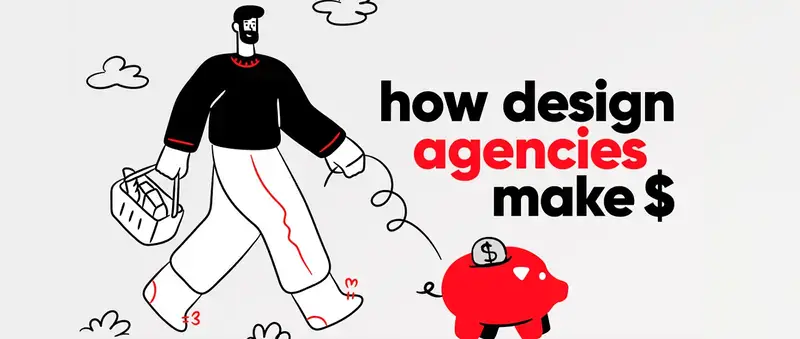
7. Collaborate with the right folks
If you’re a web design agency, you probably already know you can’t do everything. That’s exactly why teaming up with other creatives or service providers who work with the same types of clients makes a lot of sense.
Instead of chasing the same leads solo, you can build a little ecosystem where everyone wins.
🤝 Who to team up with
Think about businesses your clients already hire before or right after they talk to you:
- Branding studios. Many clients start with their brand before even thinking about a website.
- Copywriters. Good copy brings the site to life, and most clients aren’t great at writing their own.
- Marketing agencies. If they’re helping someone launch a campaign, chances are that client also needs a website update.
- SEO consultants. Sites that rank need strong technical foundations and solid design.
- Photographers. Especially for local or product-based businesses, visuals matter.
Instead of competing, you can refer clients back and forth or even pitch projects together.
Or say you work with a solo copywriter. You refer clients who need help with tone and messaging, and in return, they send web projects your way. You don’t even need to formalize it, just stay in each other’s orbit and keep talking.
These connections will help you deliver stronger work, too.
Nobody likes the person who shows up out of nowhere asking for favors, though. But if you’ve ever passed along a lead to another agency, you know that stuff usually comes back around.
🤝 Why this works
Referring work without asking for anything upfront builds trust and makes you stand out. And when that designer, writer, or developer suddenly finds themselves too booked to take a project, guess who they’ll think of?
That’s how the good kind of word-of-mouth starts.
🤝 Set the tone
You don’t need to turn this into a formal partnership or affiliate setup, of course. More like “Hey, I had someone reach out looking for X. Thought of you first, want the intro?”
That’s some good design karma in motion.
8. Give clients a preview before they pay
People hesitate when they’re not sure what they’re getting. Give them something real. It can be small but useful, before they commit.
🎁 Free audits that don’t feel salesy
Offering a quick homepage audit or UX review can go a long way. It gives potential clients a reason to talk and shows you know your stuff. You can just send a short Loom video walking through their site, pointing out a couple of things that could be smoother or look better.
🎁 Strategy calls that actually help
This one basically works like the free audit. Instead of “free consultations”, think of it like a 20-minute idea session. You can look over what someone already has and suggest two or three small wins they can act on. That alone builds trust and often leads to, “Can I just hire you to do this?”
If you’ve ever had someone say “we’re not ready to commit yet”, this is your in-between offer. It helps them feel seen and gives you a chance to show how you think.
9. Let a few bucks do some talking
Organic reach only gets you so far, but a little cash behind the right message can get you in front of the people you actually want to work with. You don’t need a big budget, though! Even a couple of small, well-placed ads can help you reach folks who are already looking for the kind of work you do.
📣 Social ads that hit
Skip the generic “Need a website?” ad. Instead, show off your real work. Something like:
“Built this site for a local fitness coach, mobile-friendly, super fast, and ready to sell memberships.” Then include a link to the project or a case study. Target that ad at fitness pros in your area or industry.
Promote what you’re already doing
If you’ve written a helpful post or guide, give it a small boost. Spending even $20 to promote a blog post like “5 things that make your restaurant website suck” can bring the right eyeballs to your site.
📣 Use local targeting
If you’re running Facebook or Google ads, set your location to a specific city or neighborhood. Local businesses are more likely to respond when they know you’re nearby.
And, to address the elephant in the room…
Bonus: 10. Cold outreach that doesn’t feel weird
Most people hate cold calls for good reason. But reaching out to someone you don’t know doesn’t have to feel like a bad sales pitch.
Cold outreach gets a bad name because it’s often lazy. It’s usually a generic message to someone who’s never heard of you, with no context and no reason to care, and usually ends up in the trash. But if you’re thoughtful about it, it might still be worth trying.
💬 Warm it up first
Start with people who’ve already shown a flicker of interest. Maybe they liked a post, viewed your profile, or joined the same Slack group or Facebook community. That small connection gives you a reason to reach out and makes the conversation less random.
For example, you may notice that a small coffee shop owner followed your agency on Instagram. They might have replied to one of your Stories with a quick comment, which is a good opportunity to start a casual chat.
💬 Start with something small
Instead of opening with a pitch, ask a simple question or offer something helpful.
Something like: “Hey! Saw you run [name of business]. Our agency has worked with a few businesses in your space. If you ever want a second opinion on your site, happy to take a quick look and send some suggestions.”
That’s it. Low pressure. If they ignore it, no big deal. If they’re curious, you’ve started a real conversation.
💬 Be personal, not pushy
People can smell copy-paste (and ChatGPT) from a mile away, so keep your messages short, human, and specific. Mention something you genuinely noticed about their business. Show that you’re not blasting the same message to 50 people.
Here’s what not to do ❌:
And here’s what to do instead ✔️:
💬 So… Is it worth it?
If you’re willing to do a little homework, yes. Cold outreach (or “warm-ish outreach,” really) can work well for design agencies sometimes, especially when your portfolio speaks for itself, and you focus on helping rather than selling.
And there you have it!
Some of the best projects come from clients who know what they want, but it can be just as fun to help someone figure it out. Either way, it all comes down to good conversations and real connections, one coffee, Zoom call, or Slack message at a time.
If you found this guide helpful and want to get more insight or inspiration, check out what else we have in our blog or jump straight into some of these articles I think you’ll find interesting:


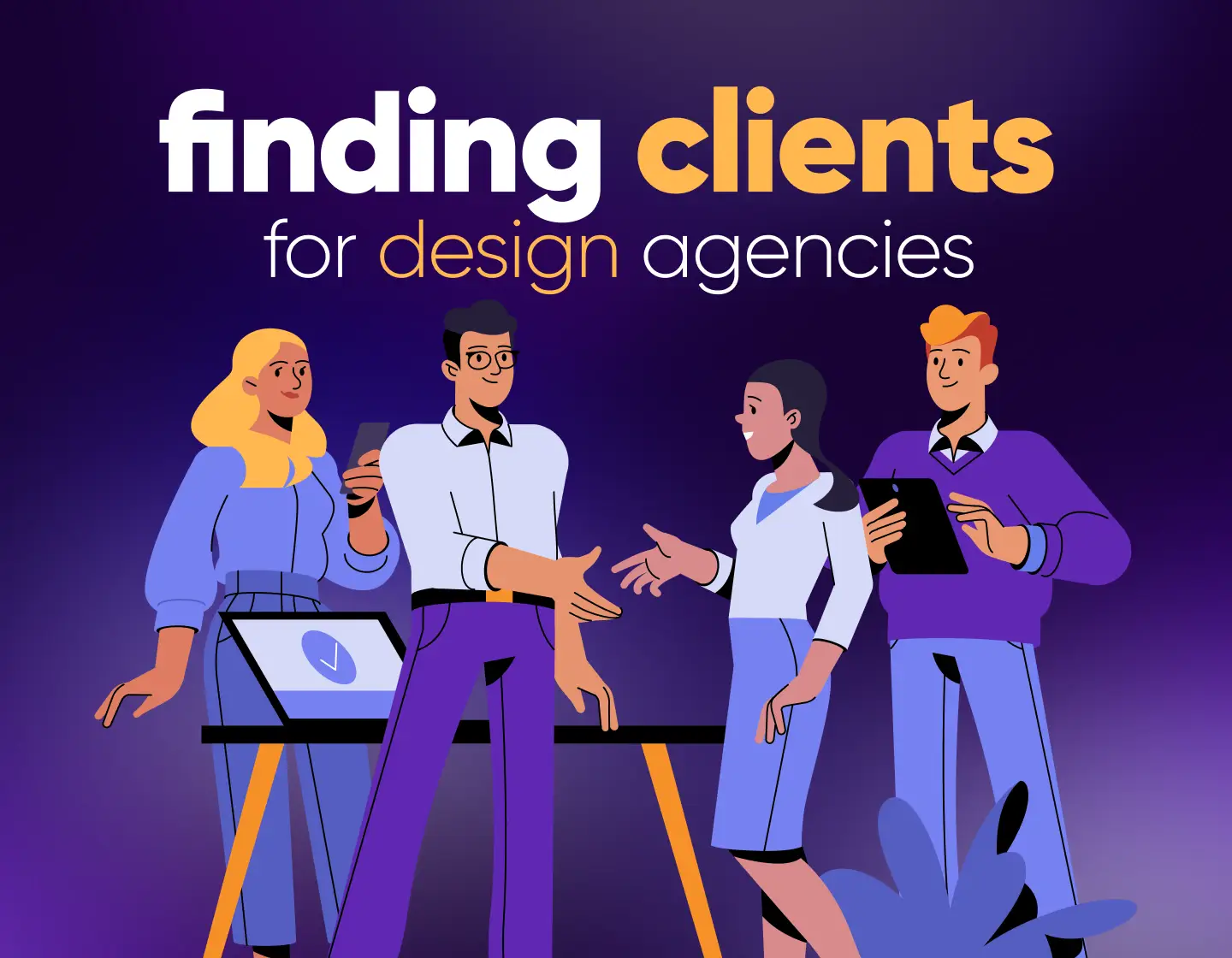
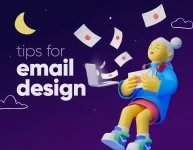
![15 Tips for Effective Communication With Clients [That Actually Work]](https://reallygooddesigns.com/wp-content/uploads/2025/04/tips_for_effective_communication_with_clients-193x150.webp)
